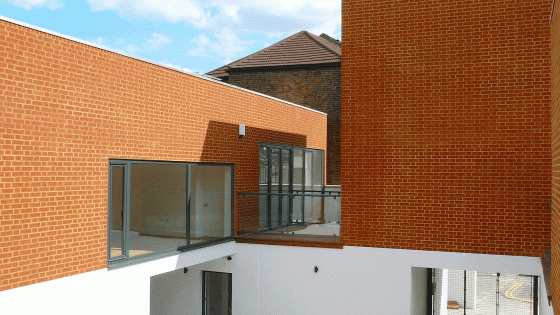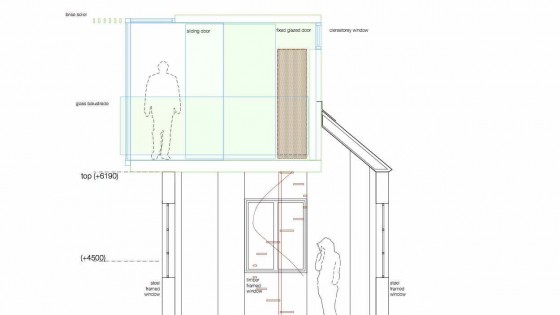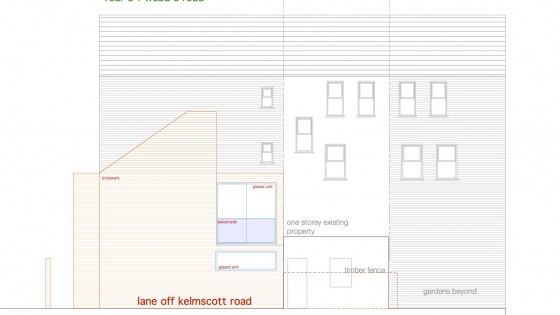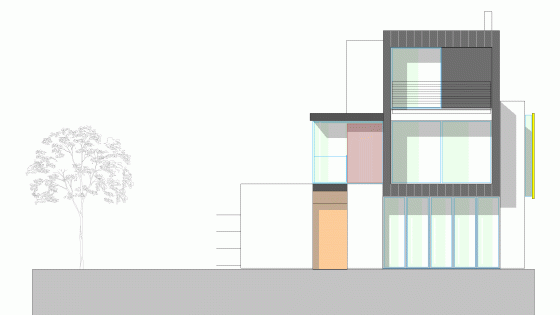Category: New Build
Mar

Feb

Glass Penthouse | Architects for Hackney | Bethnal Green, East London
forresterarchitects has recently conducted a feasibility study for a landlocked house located in Tower Hamlets, surrounded by neighboring properties on all sides. As there is no scope for expansion on the ground level, the only possible solution is to go up. A glass penthouse structure is proposed, which will provide space for a new master bedroom and en suite bathroom. The design aims to maintain the privacy of the occupants by incorporating sliding translucent panels.
The proposed design aims to create an extension that not only provides additional space but also enhances the overall look of the property. The use of a glass structure will provide a modern touch and allow natural light to penetrate into the property. As the penthouse will be visible from neighbouring properties, a translucent panel system will be used to maintain the privacy of the occupants while still allowing natural light to pass through. The new master bedroom and en suite bathroom will be enclosed in the glass structure and will be accessed via a new staircase leading up from the existing floor. The use of glass will not only provide a sleek and modern aesthetic but also offer stunning views of the surrounding area. As this is a feasibility study, the proposed design may be subject to change based on various factors such as building regulations, client preferences, and budget. The design will need to be approved by the relevant authorities before construction can begin.
The glass penthouse project is an excellent example of how forresterarchitects can create innovative solutions to overcome the challenge of landlocked properties. The use of a glass structure to create additional space not only enhances the property but also provides an opportunity to bring in natural light and stunning views.
Jan

Infill Development | Architects for Lambeth | Clapham, South West London
forresterarchitects have recently submitted a planning application for a new build infill house in Clapham, South London. The project involves the development of an unremarkable bookend property, which presents an opportunity to construct a new two-storey infill development. In response to the high demand for housing in London, developers are increasingly seeking out obscure plots of land with the potential to be developed, and this infill development is no exception.
The proposed infill house is designed with living accommodation on the upper floors, while the bedrooms are located on the ground floor, creating an unconventional layout. The upper floor features a double height lounge with a south-facing aspect, providing a bright and airy room with ample natural light. The ground floor houses two double bedrooms and a ground floor accessible WC. In accordance with current planning policies, the development includes a terraced garden space, which is accessed from the lounge area at the rear of the property.
The provision of garden space is a strict requirement for new house developments, and this infill development is no exception. Infill developments such as this provide an opportunity for clients to take advantage of residual or inefficient land use, which would otherwise go unused. By creating a two-storey infill development on an unremarkable bookend property, forresterarchitects have maximized the potential of the plot and provided their client with a modern and unconventional living space, complete with a terraced garden.
Jul

New Build Development | Architects for Hampstead | Hampstead Conservation Area, North West London
forresterarchitects, in collaboration with another architect, have been granted planning permission for a new build house in Hampstead, North West London. The new development will replace an existing 1930’s chauffeur’s house with a modern, open-plan design. The ground floor will provide a large, open space that looks out onto a landscaped garden, and the double-height lounge will feature a 6m high library. The design includes an art gallery as part of the main circulation route, allowing visitors to view artwork as they walk through the house. The bedrooms are located on either the front or rear of the house, with primary views overlooking the garden. Sustainable features such as solar thermal panels, air-borne heat recovery, and rainwater harvesting will be incorporated into the design. The new build house has a contemporary aesthetic that stands in contrast to the more traditional architecture found in the Hampstead Conservation Area.
The development process involved the demolition of the existing house, with the new house built in its place. The open-plan design allows for an efficient use of space, providing a sense of connection between the interior and exterior. The design prioritizes natural light and creates a seamless transition between the indoor and outdoor spaces. The art gallery is a unique feature of the design, adding an element of cultural significance to the house. The gallery is situated in the main circulation route, allowing visitors to appreciate the artwork as they move through the space. Sustainability is a key element of the design, with the use of solar thermal panels and air-borne heat recovery reducing the carbon footprint of the house. The design also incorporates rainwater harvesting, which collects and reuses rainwater for non-potable uses such as watering plants and flushing toilets. The inclusion of sustainable features not only reduces the environmental impact of the house but also provides cost savings for the homeowner.
The new build house in Hampstead represents a departure from traditional architecture found in the area, with a contemporary design that prioritizes sustainability and an efficient use of space. The house incorporates unique features such as the art gallery and the 6m high library, adding an element of cultural and artistic significance to the property. The design is an example of how modern architecture can coexist alongside more traditional buildings, providing a new interpretation of the Hampstead Conservation Area.